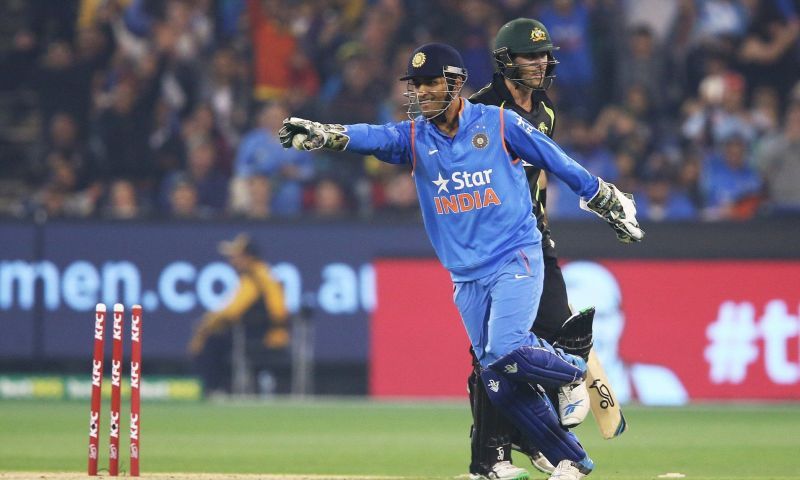
Explained - The art and science of an MS Dhoni stumping

What is old and classic now was once brash and young. When MS Dhoni debuted for India, he was the unorthodox belter of the ball, with flowing brown locks of hair. His keeping was unconventional but adequate. India wasn't complaining because they thought here's the closest thing to Adam Gilchrist we have. But gradually, his glove-work became refined and he came up with a technique that was uniquely his and worked only for him. Dhoni's glove-work was hitherto unseen and it is doubtful that we will see a clone or a close replica, leave alone an emulator. It is because he combines street-smart chicanery and blessed intuition.
To break the rules, you have to know them first. Kids in training camps are all taught to take their hands back to cushion the impact of the ball. This makes you lose a few fractions of a second and then a further few to bring the ball back to complete the stumping. Instead of the backwards motion for cushioning the ball, Dhoni does something with his wrists. The whole forearm doesn't go back and sideways, only the wrists do and like a spring, acting on a jerk, whips back and the bails are off. All of this happens in less than 0.10 seconds. And therein lies his speciality.
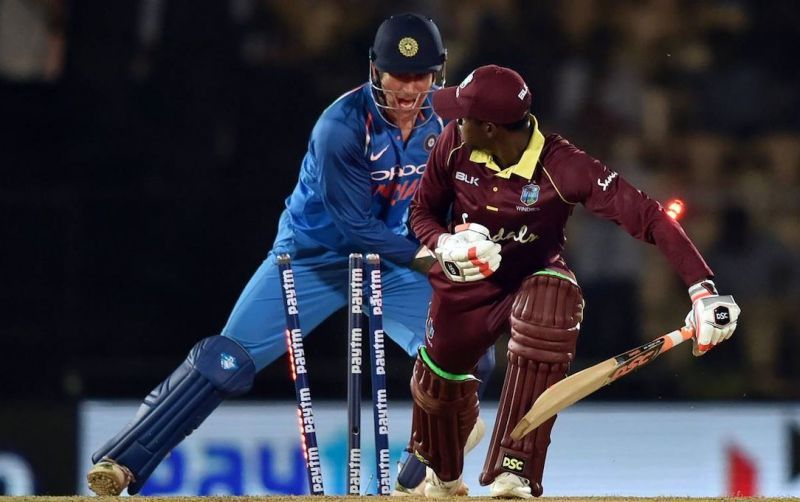
Replace the stumper and it is a normal delivery. Even the opportunity is not evident, because that briefest of moment, where the black magic happens is so ephemeral that in the normal passage of time, simpler mortals can't even detect its presence. Unlike MSD. The stumping is so quick that it is not the bowler who gets the wicket, it is him. Of course, the spin, the drift and the trajectory have to be judged too, but that's already taken care of - such is his peripheral vision. He understands the angles. He knows and if not, he adjusts. In any eventuality, he there - the Pythagoras with gloves.
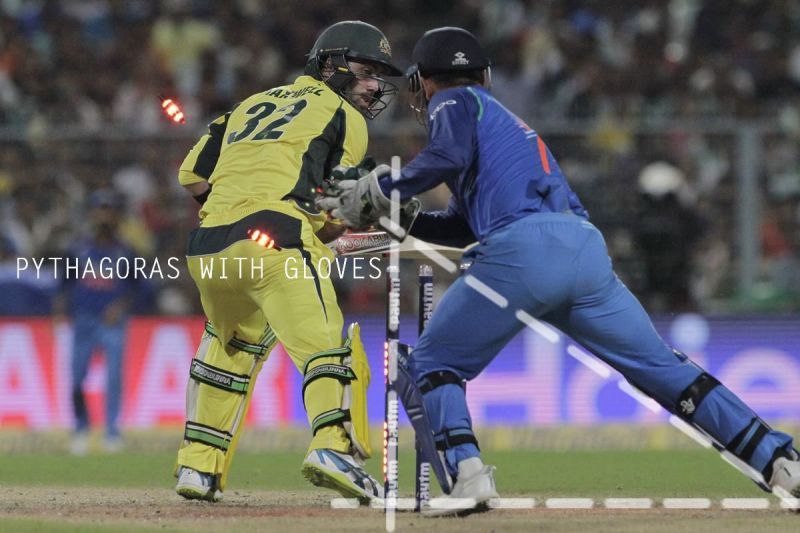
So how does he do it?
To catch a ball you have to have soft hands, and to create that softness while others take more time to reduce the momentum of the ball to pouch it cleanly, Dhoni negates the momentum by applying an opposing force. It happens hidden to us inside his long sleeves and Indian Army insignia gloves. Kolkata Knight Riders' captain and keeper of some repute, Dinesh Karthik, having seen this from close quarters explains with awe...
"He’s able to create that softness even while his hands are going towards the ball, which is amazing. I’ve tried it. It is very hard. I have not been able to get close to that.”
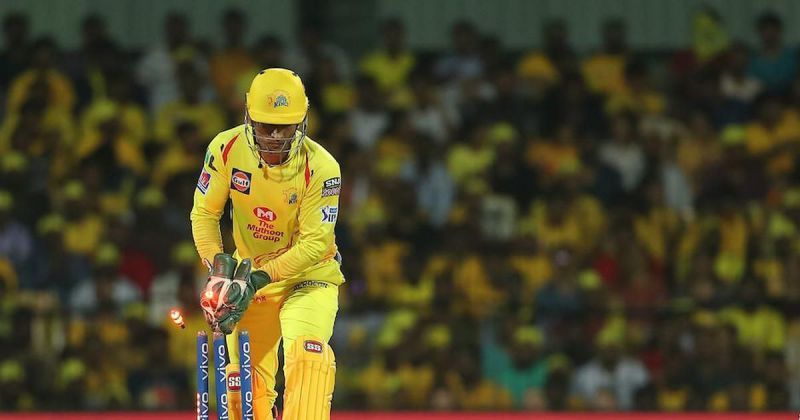
It seems like a recipe for disaster as balls will fumble out of the gloves more often than not. How Dhoni doesn't and pulls it off is explained by R Sridhar, India's fielding coach.
"He uses force to absorb force, by pushing his hands towards the approaching ball even if it might seem like the most unnatural or counter-intuitive motion for any other wicket-keeper. While his hands are going towards the stumps, there’s a slight flick of the wrists in the backward direction. In my opinion, it’s not safe hands but strong hands that allow him to do that. That’s also the reason you will rarely see him collecting the ball to his side like other keepers.”
Viewers today are lucky to have super slow motion cameras, which slow down the time for us to witness how he tweaked physics to fabricate his masterpiece. For him, it is muscle memory, for the batsmen it feels like daylight robbery. Marylebone Cricket Club (MCC) can't even think of including this in the wicket-keeping booklet because it is so unconventional and yet, Dhoni is not breaking any immutable laws of physics. He is merely tinkering with it. For someone who has kept for this long in all the 3 formats, he has not got one bent finger. The ball always is in his cushy palms and springy, yet robust wrists; incidentally the same tools that makes his whiplash helicopter shot work.
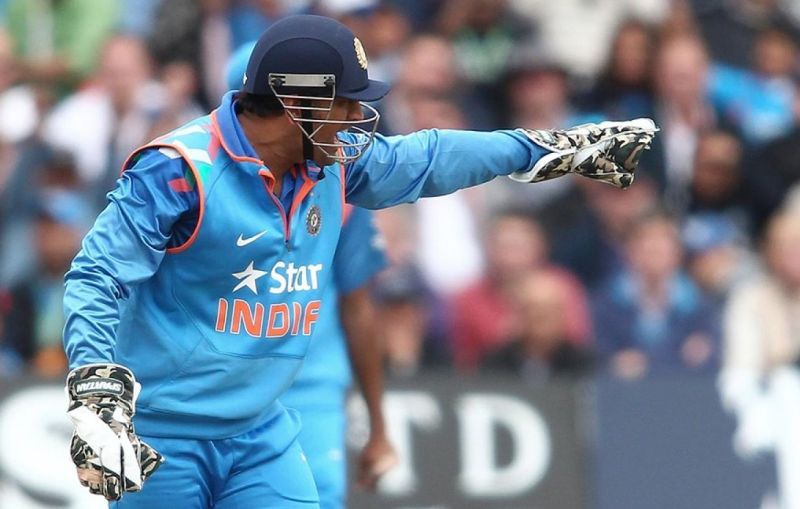
What makes him special is the splice of time that he finds and sculpts his wizardry in. We are extremely unlikely to see this form of awareness that grasps and exploits that briefest of windows. By the time it is over, the death knell for the batsman has been sounded. The zing bails light up and Dhoni nonchalantly raises his left hand towards the square leg umpire, sometimes with devilish glee. A lot of players around the square and 30-yard circle also miss the trick that he has pulled, but when the appeal goes upstairs for the frames to be dissected, it is irrefutably clear that the surgeon has done his job without leaving a trace.
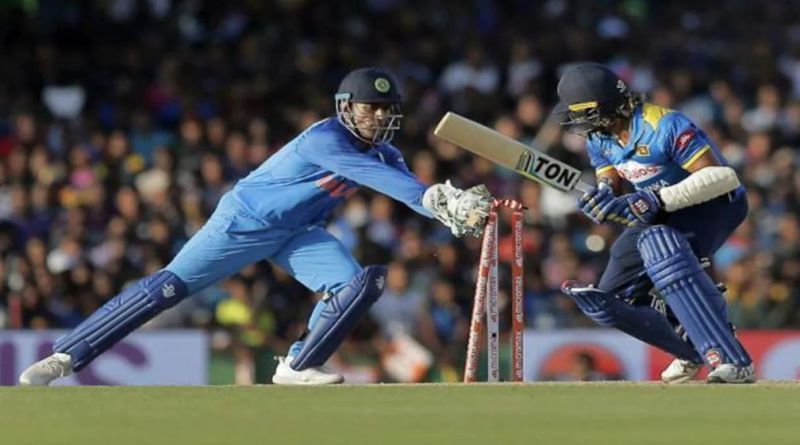
Dhoni doesn't crouch, he merely bends just enough so as to have his eyeline and hands as close to the stumps as possible, while cutting down on all excessive movements, shaving off milliseconds, which makes his illusion even quicker. Lightning quick. Leave you the crease and you're gone. The ball passing the stumps and the bails being dislodged are separate events but are instantaneous, when it is him behind.
He does this often, almost sub-consciously, always picking the right fraction of the second to dislodge the stumps. To give a sub-atomic analogy, while others watch atoms, he can see the quarks. That is where he combines art and science. It is genius. It is priceless.
Also read | What's next for MS Dhoni after the ICC World Cup 2019